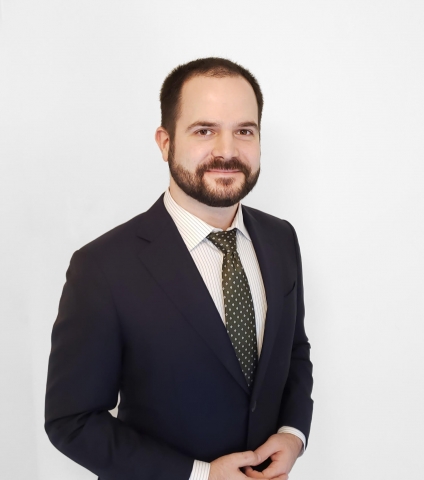Imaging systems are everywhere, and they're helping create a safer world. ARCS Alumnus Benjamin “Ben” Berman knows that firsthand as he's part of the Emerging Technology Innovation Center at MITRE, a federally funded research and development center. He uses computation imaging to gather images and information to solve problems and create a safer world.
"It's imaging with computers. Computational Imaging is as ubiquitous as imaging these days," explains Berman. "The overall objective is to use computation to improve imaging performance. And computers allow us to develop capabilities that would otherwise be impossible or cost prohibitive."
The project he's currently working on uses spectral cameras to determine food safety. Recently, there's been a high demand for its highly trained staff nationwide. They receive food samples and manually inspect them for contamination to preserve public health. Berman says MITRE and spectral cameras can help.
Spectral cameras can identify food contaminants that are undetectable to the human eye. This ability helps manufacturers maintain food safety standards more feasibly and reliably. "Because spectral cameras can see light beyond what we can see with our eyes," explains Berman. "Spectral cameras can see a much more complete set of colors that we can't see. But that would allow them to create a comprehensive dataset to help them discriminate between different sources of contamination."
Berman is proud of his work at MITRE. His other computational imaging projects include making vehicles safer, exploring ways to screen crowds to measure their physiological characteristics, and finding new ways of acquiring data from existing MRI scanners. "Our company slogan is literally 'solving problems for a safer world,' and I have the responsibility of solving computation imaging problems for a safer world," shares Berman.
He was first introduced to computational Imaging while pursuing his PhD at the University of Arizona as an ARCS Scholar. His research area was Medical Imaging Research. He focused on developing ways to make MRI scanners collect data faster and enabling new applications for a higher signal-to-noise ratio for magnetic resonance imaging systems.
Berman is grateful to be an ARCS Scholar as it allowed him time to focus solely on his PhD research. "The ARCS Scholar Award enabled me to take on a research assistantship rather than a teaching assistantship," he says.
His time as an ARCS Scholar taught him two important lessons he uses now in his career. The first was "to embrace research topics that have an opportunity to reshape the world." He learned this lesson with ARCS and carried it into his career at MITRE. The second lesson was "translating our scientific work into a language everyone can understand."

